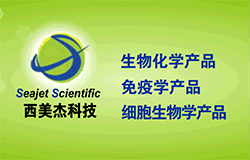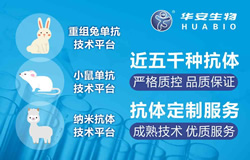英文名称 14-3-3
中文名称
14-3-3蛋白重组兔单克隆抗体
别 名 14 3 3 alpha; 14 3 3 protein beta/alpha; 14-3-3 protein beta/alpha; 1433B_HUMAN; Brain protein 14 3 3 beta isoform; GW128; HS 1; KCIP-1; KCIP1; N-terminally processed; Protein 1054; Protein kinase C inhibitor protein 1; YWHAA; YWHAB.
研究领域 细胞生物 神经生物学 信号转导 细胞凋亡
抗体来源 Rabbit
克隆类型 Monoclonal
克 隆 号 9C4
交叉反应 (predicted: Human, Mouse, Rat, )
产品应用 WB=1:500-2000
not yet tested in other applications.
optimal dilutions/concentrations should be determined by the end user.
分 子 量 28/19kDa
细胞定位 细胞浆 细胞膜
性 状 Liquid
浓 度 1mg/ml
免 疫 原 Recombinant human 14-3-3 protein:
亚 型 IgG
纯化方法 affinity purified by Protein A
储 存 液 0.01M TBS(pH7.4) with 1% BSA, 0.03% Proclin300 and 50% Glycerol.
保存条件 Shipped at 4℃. Store at -20 °C for one year. Avoid repeated freeze/thaw cycles.
PubMed PubMed
产品介绍 14-3-3 are activates tyrosine and tryptophan hydroxylases in the presence of Ca (2+)/calmodulin-dependent protein kinase II, and strongly activates protein kinase C. Is probably a multifunctional regulator of the cell signaling processes mediated by both kinases. Activates the ADP-ribosyltransferase (exoS) activity of bacterial origin. 14-3-3 proteins are localized in neurons, and are axonally transported to the nerve terminals. They may be also present, at lower levels, in various other eukaryotic tissues. It belongs to the 14-3-3 family.
Function:
Adapter protein implicated in the regulation of a large spectrum of both general and specialized signaling pathways. Binds to a large number of partners, usually by recognition of a phosphoserine or phosphothreonine motif. Binding generally results in the modulation of the activity of the binding partner. Negative regulator of osteogenesis.
Subcellular Location:
Cytoplasm. Melanosome. Identified by mass spectrometry in melanosome fractions from stage I to stage IV.
Post-translational modifications:
The alpha, brain-specific form differs from the beta form in being phosphorylated.
Isoform Short contains a N-acetylmethionine at pos
bio-equip.com





